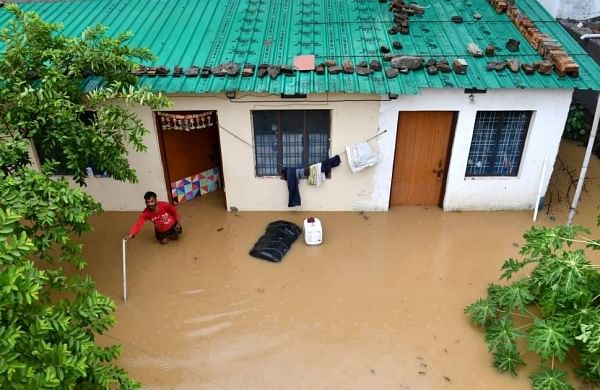[ad_1]
DEHRADUN: As the monsoon hits Uttarakhand, concerns over landslides rise in the hill state.
Already, over the past week, at least five tourists have lost their lives in Kedarnath and other places due to landslides and slipping of rocks in the initial rains.
Taking cognisance of the issue, Chief Minister Pushkar Singh Dhami has given a slew of directions to the officials as part of the state’s preparedness.
Describing the next three months important from the point of view of possible calamities, Dhami has asked the district magistrates to take most of the decisions at their level.
But Uttarakhand is prone to natural disasters throughout the year.
Even before memories of the June 2013 disaster in Kedarnath began to fade, the Rishiganga flash floods in February last year shook Uttarakhand once again in a grim reminder of the state’s extreme vulnerability to natural calamities.
The Kedarnath deluge had claimed nearly 5,000 lives, while the Rishiganga flash floods killed more than 200 people besides causing severe devastation in Reini and Tapovan areas of Chamoli district, where two hydel projects also bore the brunt.
Experts maintain that the Himalayas are young and fragile, and therefore, highly sensitive to natural disasters such as landslides, earthquakes and floods, especially during the monsoon when its vulnerability to calamities is heightened.
Dr Sushil Kumar, former Geophysics Group head at the Institute of Himalayan Geology, said as the Himalayas is a relatively younger mountain range, it consists of only soil on its upper surface up to 30-50 feet.
This soil begins eroding if it is tampered with even slightly, especially during the rains, leading to landslides.
He said cutting of the hills for construction of the all-weather road project, the huge rush of pilgrims for the Char Dham Yatra and increased rains due to the increased catchment area of the Tehri Dam have also increased the state’s vulnerability to natural calamities.
Kumar said the loss of lives due to disasters can be avoided by putting in place early warning systems in the state, but for it to be effective, the government will also have to strengthen the internet network.
He also urged the government to build earthquake resistant shelter homes for the population living in disaster-prone areas and motivate them to adopt building construction techniques that can protect them from earthquakes.
According to data from the Uttarakhand Disaster Mitigation and Management Centre, around 600 people lost their lives and 500 others were injured in natural calamities from 2014 to 2020.
Hundreds of houses, other buildings, roads and bridges were damaged during this period.
More than 2,050 hectares of agricultural land was also destroyed in these disasters.
This year, too, landslides during the initial rains have claimed at least five lives.
Chief Minister Dhami has issued instructions to various departments, including disaster management, to be vigilant and work in coordination.
In case of any disaster, he has directed the officials to respond in minimal time and begin the rescue and relief operations immediately.
In the event of disruption of road, electricity and water supply due to rain or landslide, the chief minister has directed the officials concerned to restore services in the shortest possible time.
Dhami has also asked the officials to keep teams of the State Disaster Response Force deployed in sensitive places, ensure the availability of excavators and functioning of satellite phones, and make complete arrangements for supply of essential food items, medicines and other essential commodities in advance.
He has also directed the district magistrates to take most of the decisions at their level to deal with the challenges and ensure maximum utilisation of funds set aside for disaster management.
Further, the chief minister has told the officers to release compensation to the disaster victims as per the norms at the earliest, while he also cautioned them to approve leaves of government staff only under special circumstances for the next three months.
[ad_2]
Source link
